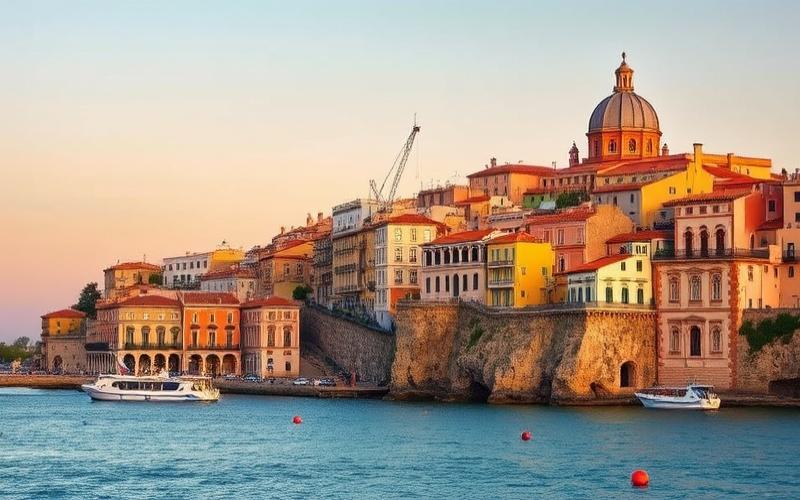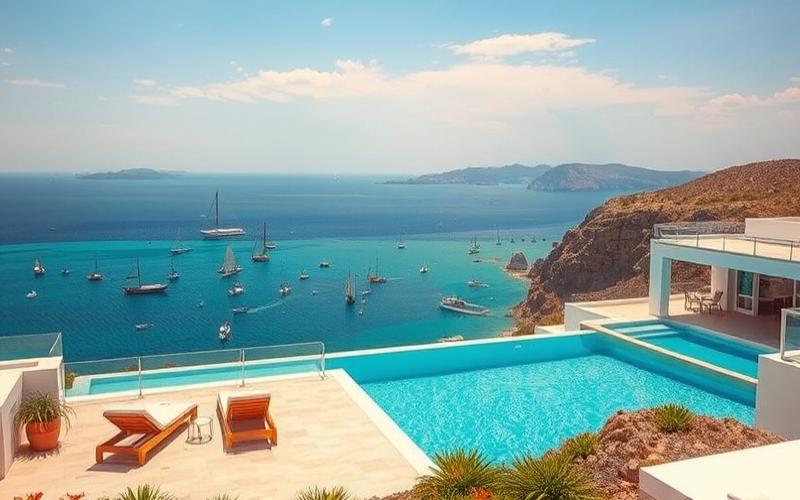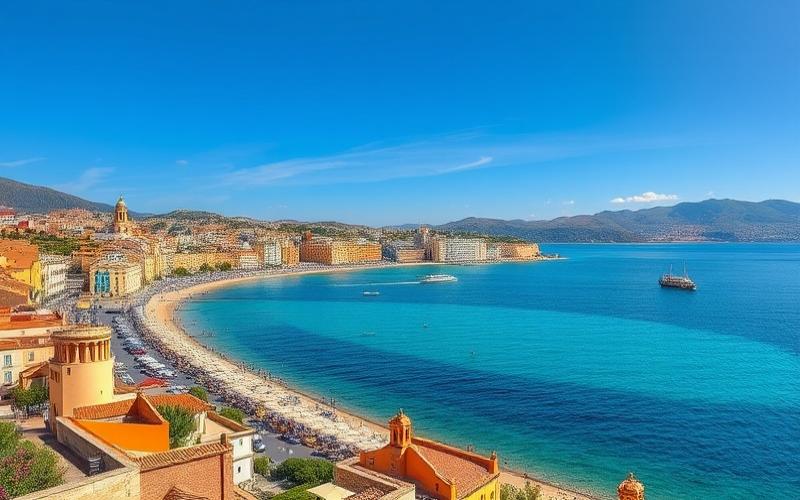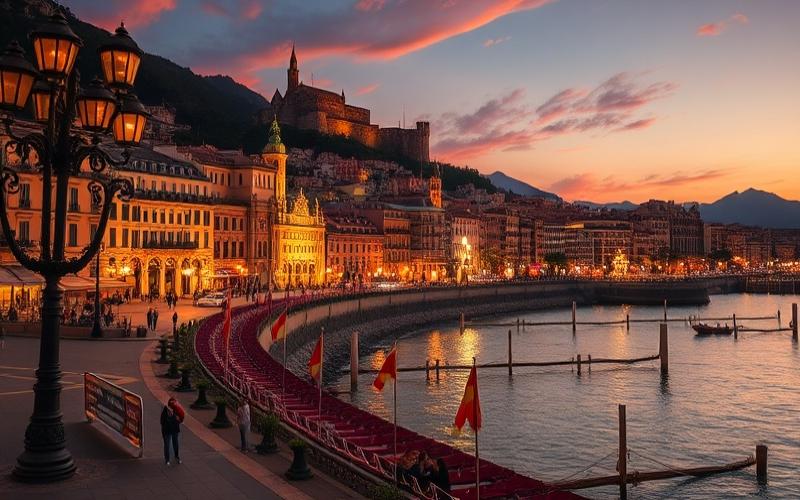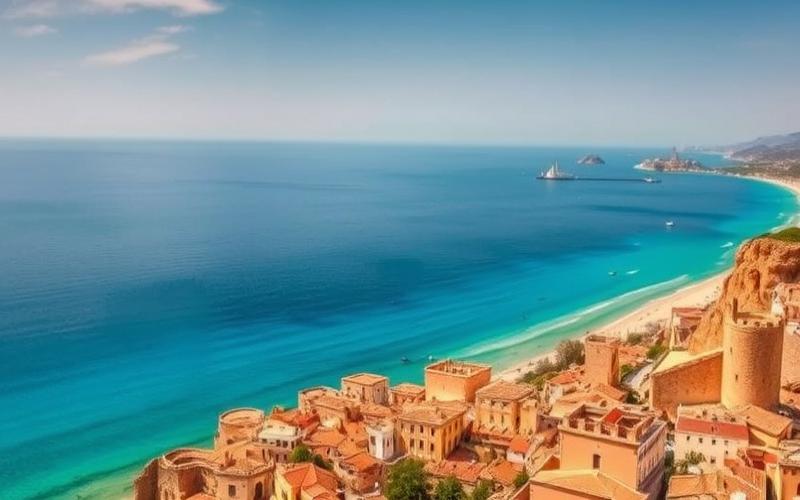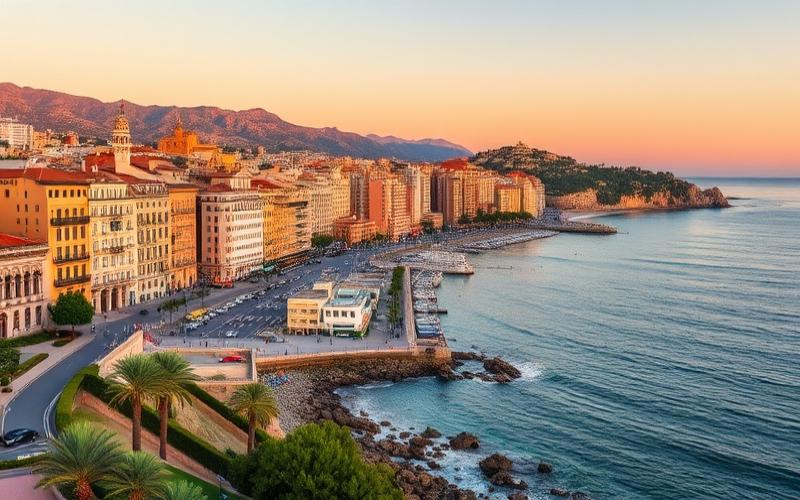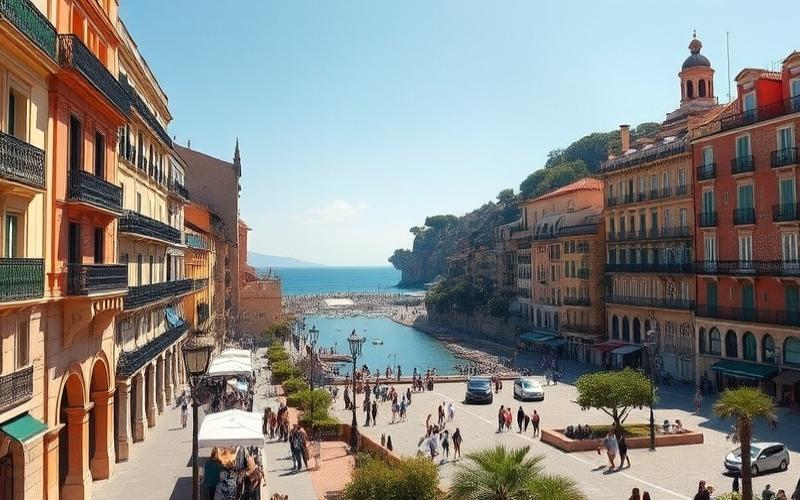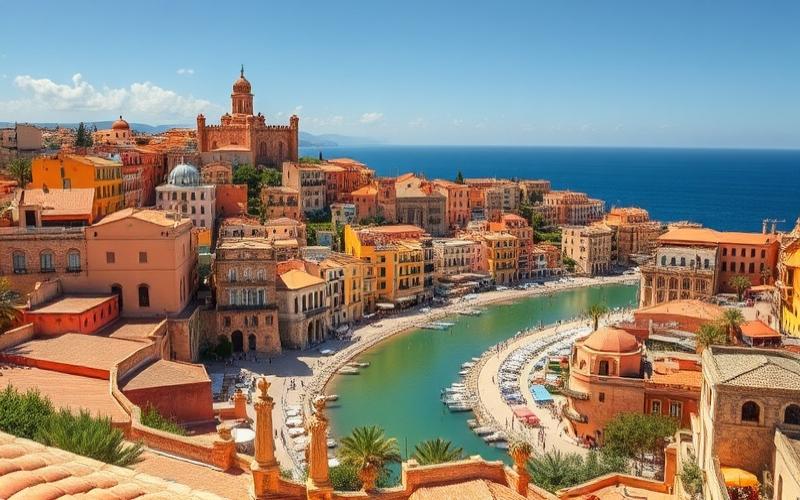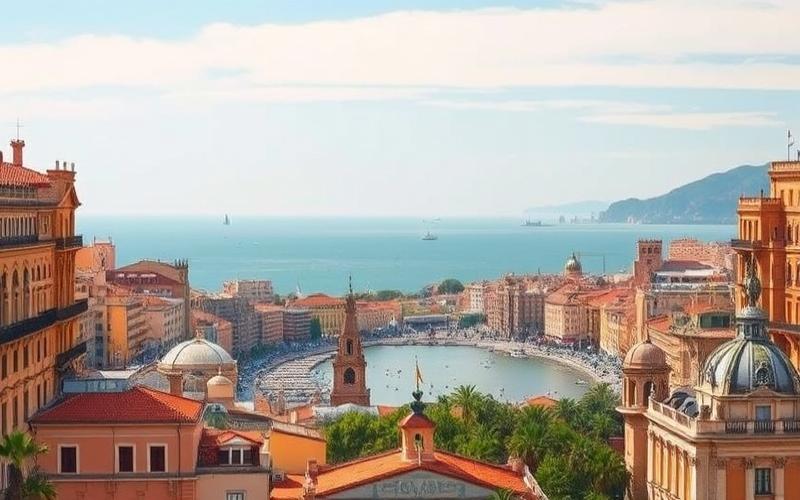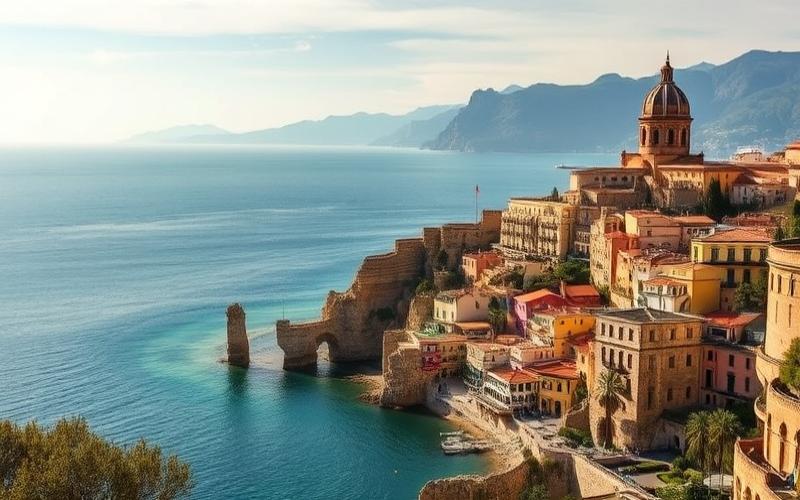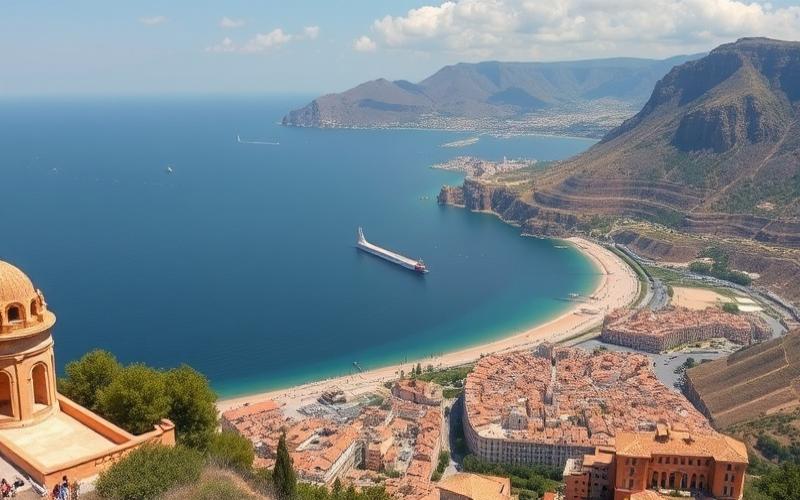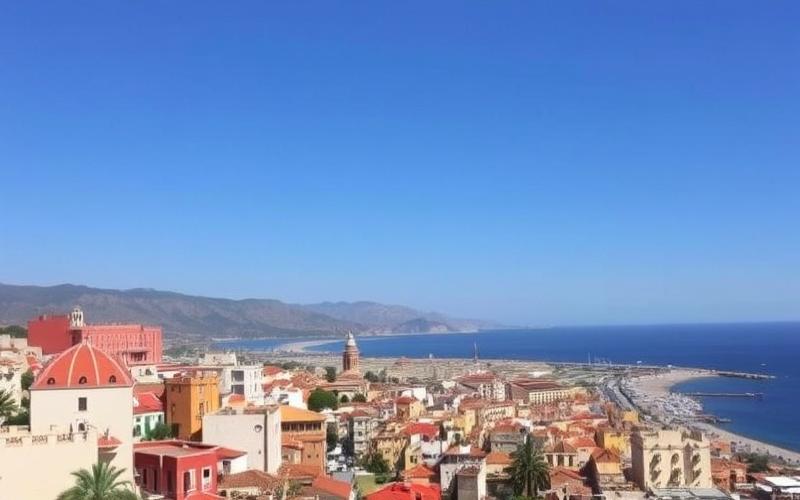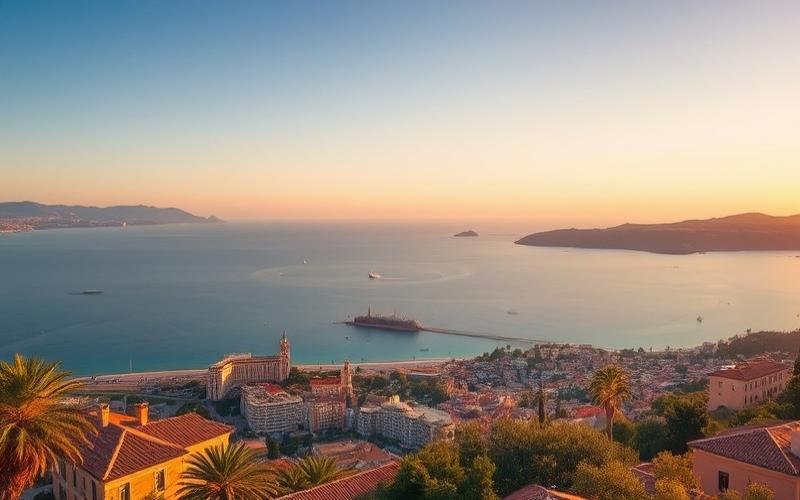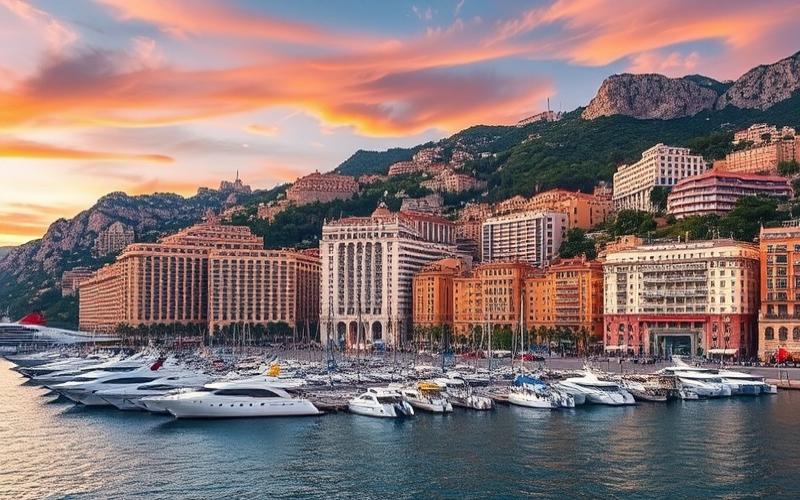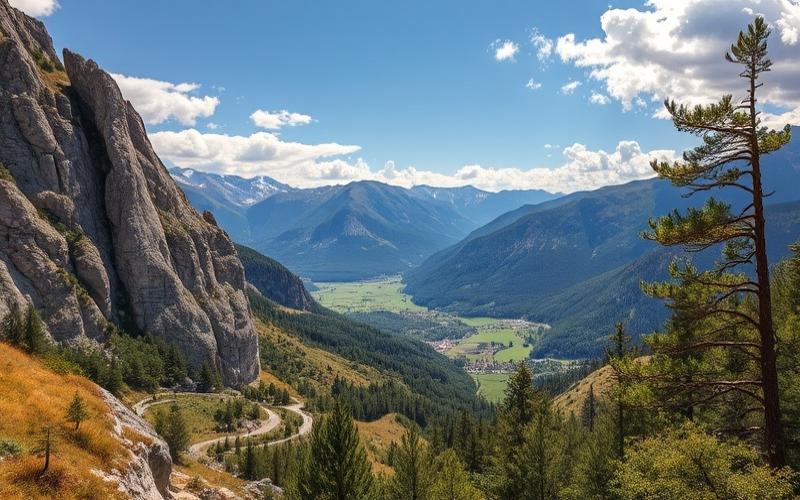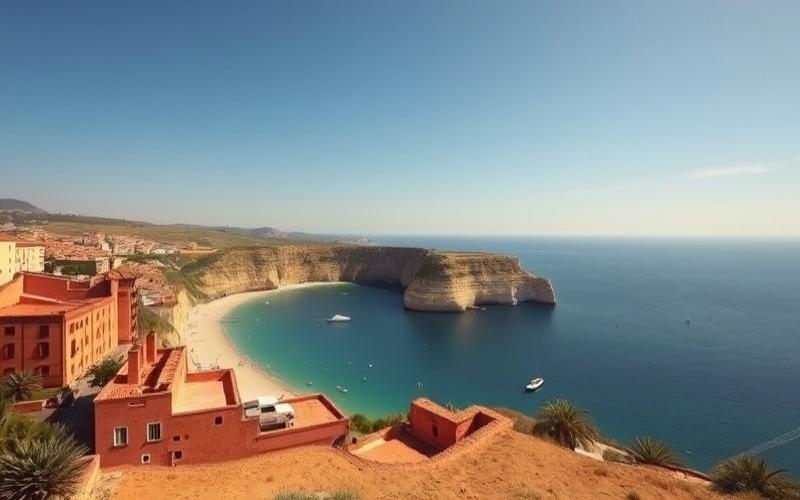
 Published on and written by Cyril Jarnias
Published on and written by Cyril Jarnias
Spain, a premier tourist destination in Europe, sees its real estate market deeply influenced by the constant influx of visitors. In 2025, the link between tourism and real estate is stronger than ever, creating both opportunities and challenges for investors and local residents. Let’s dive into this complex dynamic shaping the Spanish real estate landscape.
Crown Jewels: The Most Sought-After Tourist Areas
Spain’s tourist appeal mainly concentrates on its sunny coasts and major cultural cities. These regions experience strong real estate demand, both for vacation homes and rental investments.
Costa del Sol: Investor’s Paradise
With its sandy beaches and Mediterranean climate, the Costa del Sol remains a safe bet. Cities like Marbella, Torremolinos, and Benalmádena attract wealthy international clientele, reflected in real estate prices. In 2025, the average square meter price in Marbella reaches €3,500, a 15% increase compared to 2023.
Balearic Islands: A Booming Luxury Market
Majorca, Ibiza, and Minorque continue to attract high-end clientele. In Ibiza, the average price of a luxury villa now exceeds €5 million. Demand remains strong despite local authorities’ attempts to regulate the market.
Barcelona and Madrid: Cosmopolitan Metropolises
These two major cities attract both tourists and investors. In Barcelona, despite restrictions on tourist rentals, the real estate market remains dynamic with an average price of €4,200 per square meter in central neighborhoods. Madrid, meanwhile, sees growing popularity among foreign investors, with prices up 8% since 2023.
Real Estate Fever: Tourism’s Impact on Prices
The tourist influx has an undeniable effect on real estate prices in Spain’s most sought-after areas. This trend creates opportunities for investors but also poses challenges for local residents.
Continuous Rise in Tourist Areas
In popular coastal regions like Costa Blanca or Costa del Sol, real estate prices have seen an average increase of 10% between 2023 and 2025. This rise is particularly marked for properties offering sea views or located immediately near beaches.
Gentrification Phenomenon in City Centers
Major cities like Barcelona, Madrid, or Seville see their historic centers transformed by mass tourism. The proliferation of short-term rentals has led to a significant increase in rents and purchase prices, pushing many local residents toward the outskirts.
Creation of Localized “Real Estate Bubbles”
Some areas highly favored by tourists, like the Eixample district in Barcelona or the center of Palma de Majorca, experience particularly strong real estate inflation. Prices there reach levels sometimes disconnected from the local market, creating real “bubbles” fueled by tourist demand.
Good to Know:
Rising prices in tourist areas can create investment opportunities, but it’s crucial to thoroughly study the local market and current regulations before diving in.
Gold Rush: The Rise of Tourist Rental Investment
Tourism has profoundly transformed Spain’s rental market, with the explosion of short-term rentals and platforms like Airbnb. This trend offers new perspectives for investors while raising questions about sector regulation.
Attractive Rental Yields
In popular tourist areas, seasonal rentals can offer significantly higher returns than traditional rentals. In Barcelona, for example, a well-located apartment can generate rental income up to 30% higher in tourist rentals compared to long-term leases.
Sector Professionalization
Faced with growing demand, many investors have professionalized in managing tourist rentals. Specialized companies now offer turnkey services, from property purchase to daily management, including promotion on booking platforms.
Regulatory Challenges
Faced with pressure on the traditional rental market, many Spanish cities have implemented strict regulations regarding tourist rentals. In Madrid, for example, owners must obtain a specific license to rent their property on platforms like Airbnb, and rental duration is limited to 90 days per year.
- In Barcelona, new licenses for tourist rentals have been frozen in certain neighborhoods since 2020.
- In Palma de Majorca, renting entire apartments to tourists has been prohibited since 2018, except in specific areas.
- On the Costa del Sol, cities like Marbella impose restrictions on minimum rental duration (7 days) to limit nuisances related to mass tourism.
Emergence of New Models
Faced with these restrictions, new investment models are emerging. “Coliving” and high-end student residences are gaining popularity, offering interesting alternatives for investors looking to diversify their real estate portfolio while benefiting from Spain’s tourist appeal.
Good to Know:
Before investing in a property intended for tourist rental, it’s essential to inquire about current local regulations and anticipate potential legislative changes.
The Flip Side: Social and Environmental Challenges
While tourism has undeniably energized the Spanish real estate market, it also raises important social and environmental questions.
Pressure on Local Housing
In many tourist cities, the multiplication of short-term rentals has led to a scarcity of available housing for local residents. In Barcelona, it’s estimated that over 15,000 apartments have been converted into tourist accommodations between 2015 and 2025, contributing to a significant rent increase.
Social Tensions
The influx of tourists and the transformation of certain neighborhoods into “tourist zones” sometimes create tensions with local populations. Protest movements against “touristification” have emerged in several Spanish cities, calling for stricter sector regulation.
Environmental Impact
Real estate development linked to tourism also raises environmental questions, particularly on the coasts. Intensive construction of hotel complexes and vacation homes sometimes has detrimental consequences on local ecosystems and water resource management.
Toward a Sustainable Balance?
Faced with these challenges, Spanish authorities seek to find a balance between tourist development and preserving residents’ quality of life.
Innovative Regulatory Policies
Some cities are experimenting with new approaches to regulate the tourist real estate market. In Valencia, for example, a neighborhood quota system has been implemented for short-term rentals, aiming to preserve social mix in the most sought-after areas.
Encouraging Sustainable Tourism
Spanish authorities increasingly bet on promoting sustainable and responsible tourism. This approach translates into tax incentives for owners who prioritize long-term rentals or invest in energy-efficient renovations of their properties.
Diversifying Tourist Offerings
To reduce pressure on traditional coastal areas, Spain seeks to develop new tourist destinations, particularly in the country’s interior. This strategy could eventually contribute to a more balanced distribution of real estate investments linked to tourism.
In conclusion, tourism’s impact on the Spanish real estate market is both a source of opportunities and challenges. While investors can find interesting prospects in this dynamic sector, it’s crucial to adopt a responsible and informed approach, taking into account local social and environmental issues.
Good to Know:
Evolving regulations and tourist trends can significantly impact real estate investment profitability. Regular monitoring and adaptability are essential to succeed in this constantly evolving market.
Disclaimer: The information provided on this website is for informational purposes only and does not constitute financial, legal, or professional advice. We encourage you to consult qualified experts before making any investment, real estate, or expatriation decisions. Although we strive to maintain up-to-date and accurate information, we do not guarantee the completeness, accuracy, or timeliness of the proposed content. As investment and expatriation involve risks, we disclaim any liability for potential losses or damages arising from the use of this site. Your use of this site confirms your acceptance of these terms and your understanding of the associated risks.

